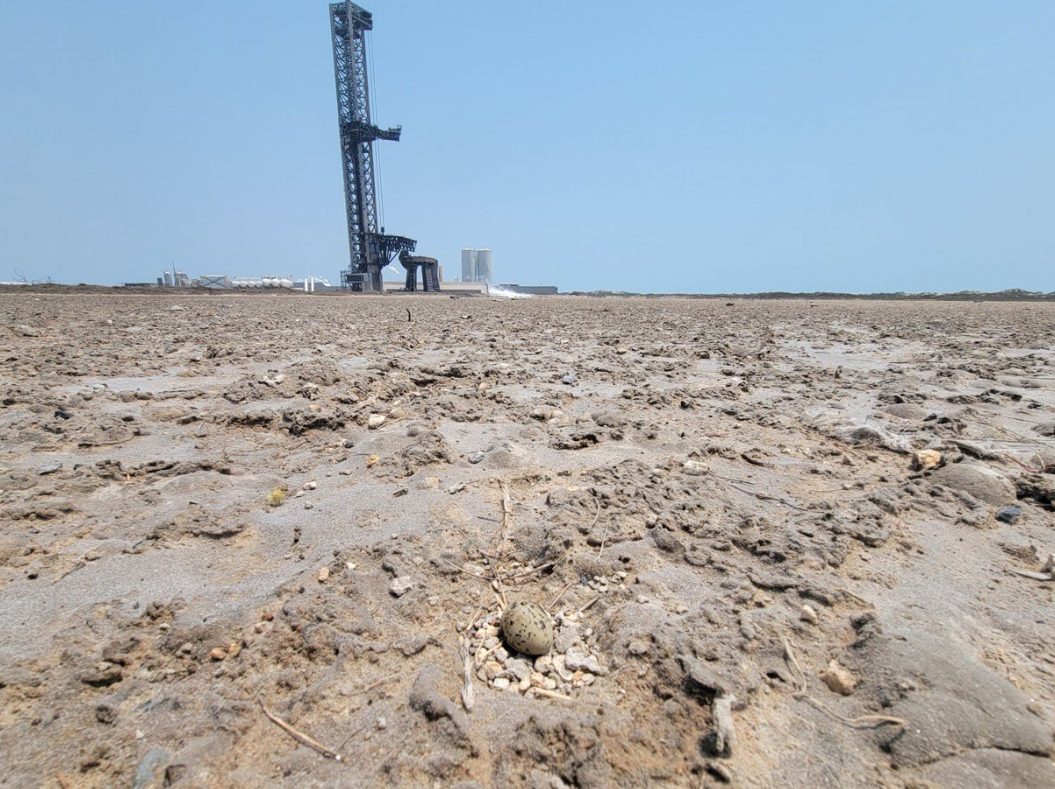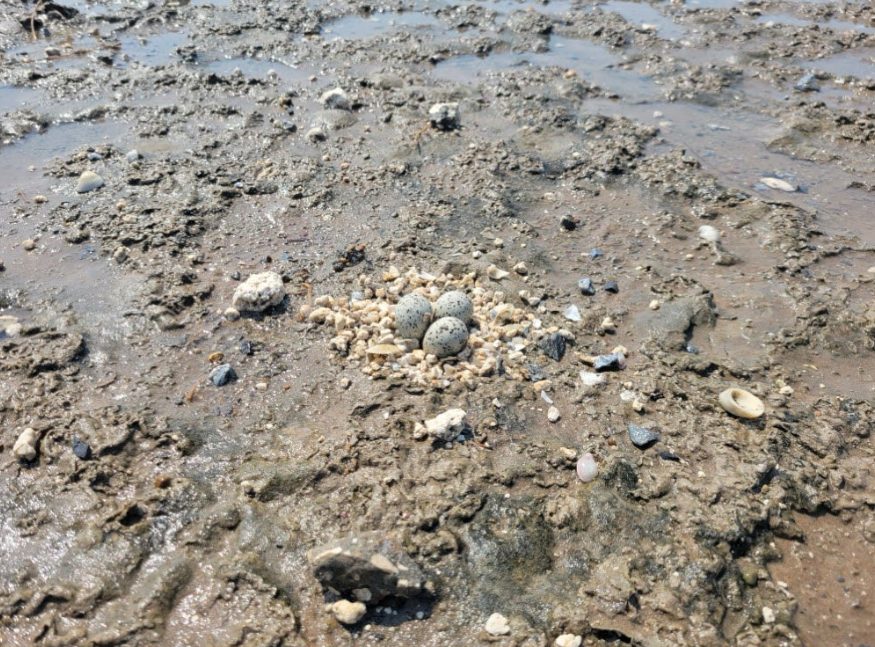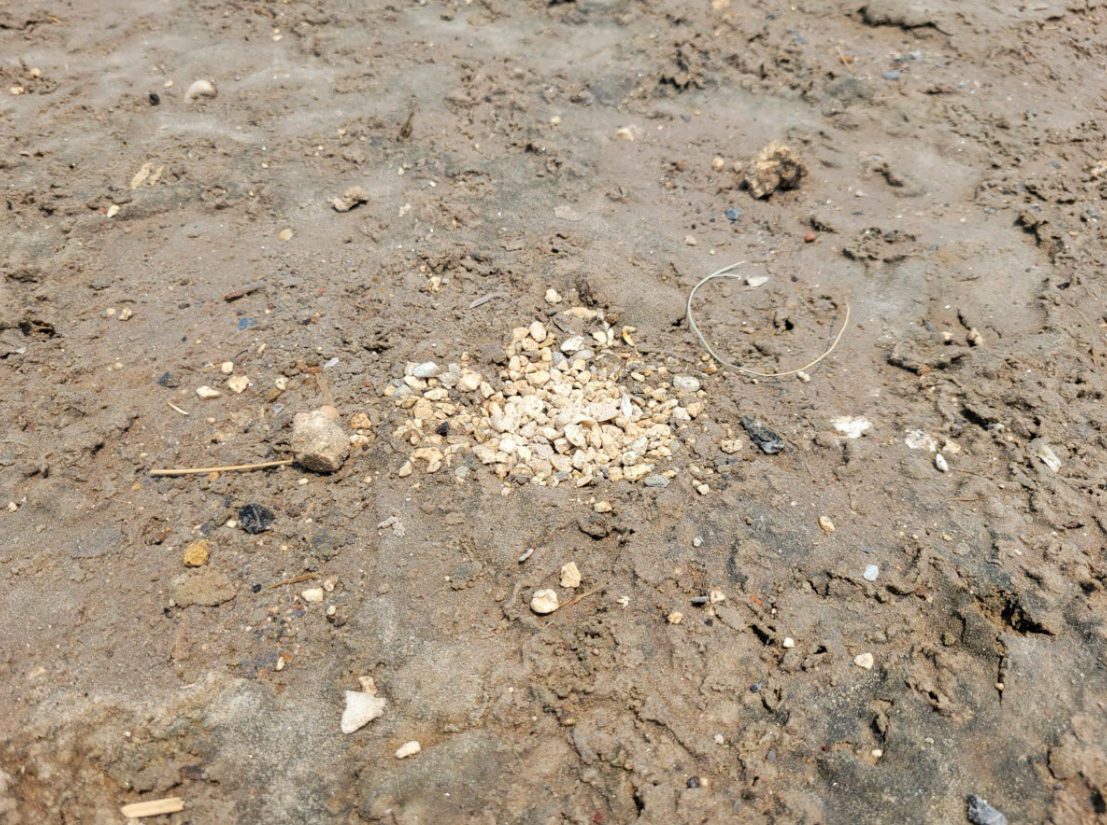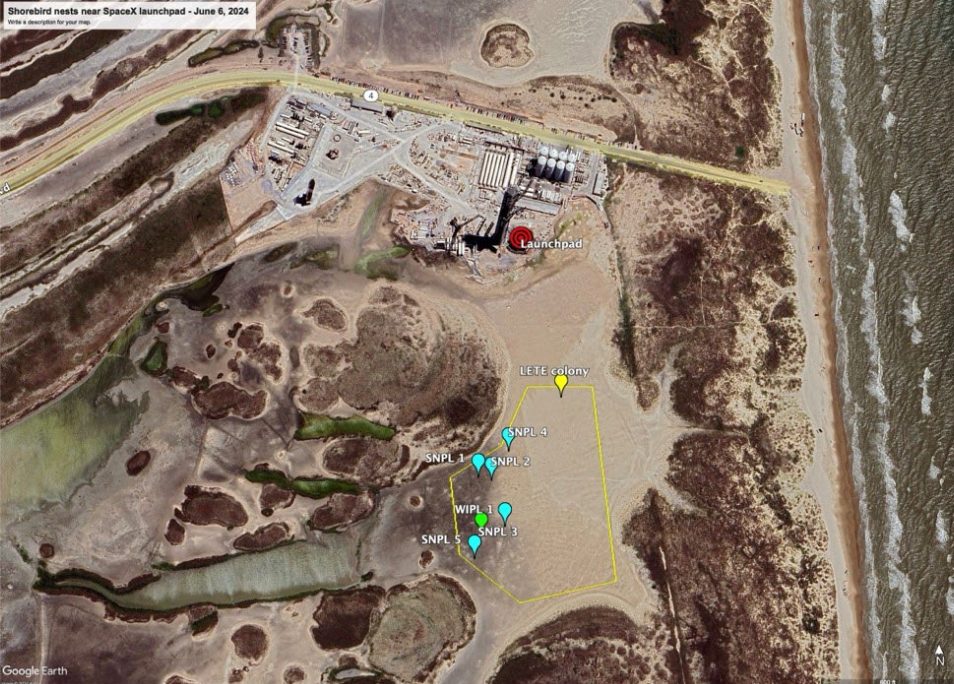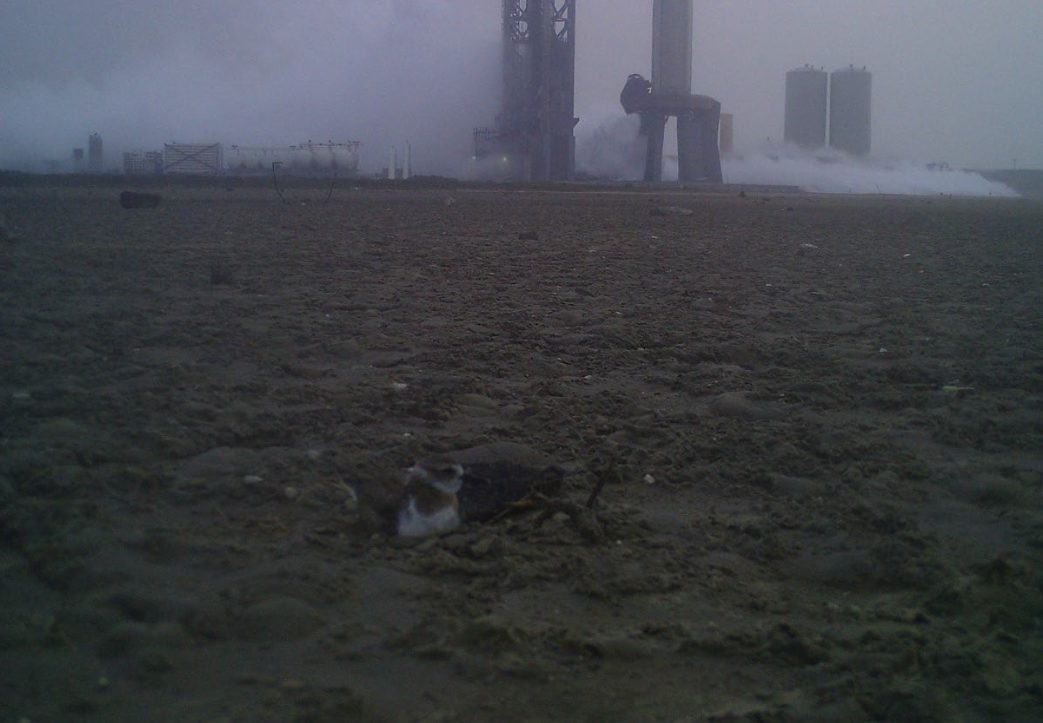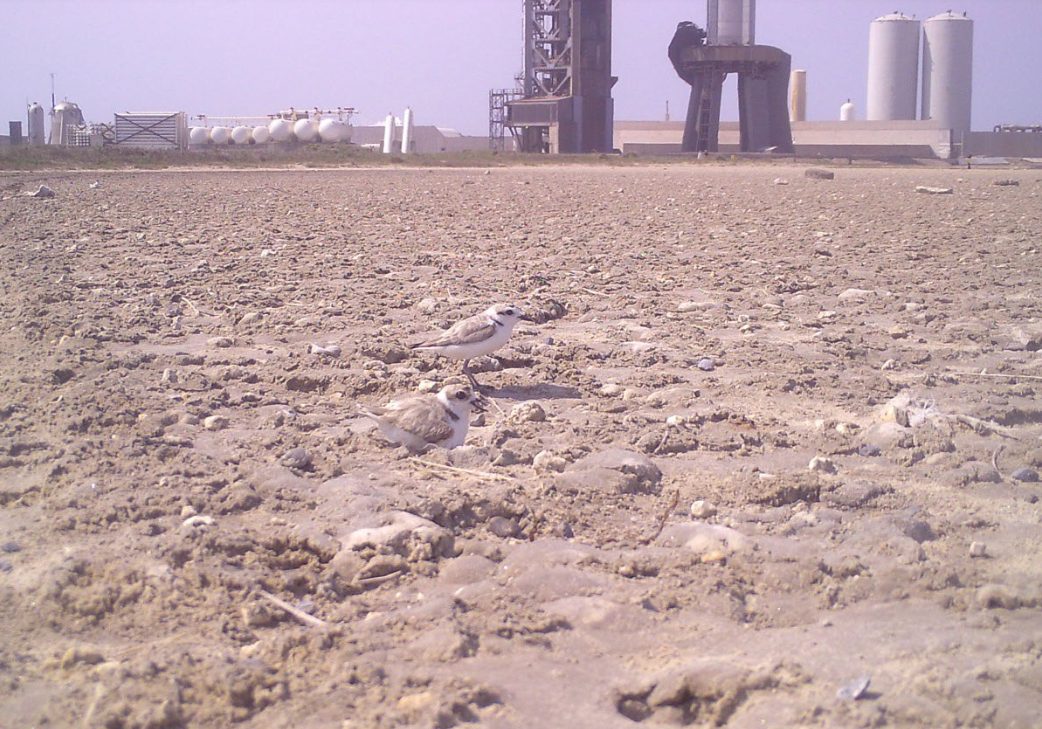|
Only have a minute? Listen instead
Getting your Trinity Audio player ready...
|
Shorebird nests were damaged by SpaceX’s June 6 Starship launch from Boca Chica, with shorebird nesting activity declining overall since the company began testing and launching rockets at the site, according to a report just released by the Coastal Bend Bays & Estuaries Program, or CBBEP.
Team members with the nonprofit organization conduct weekly surveys of nesting shorebirds at several subsites at Boca Chica during shorebird breeding season, roughly March through August. Monitoring for the 2024 season began Feb. 23. What CBBEP calls the South Launch subsite, contained entirely within Boca Chica State Park, has been monitored since the 2021 nesting season, according to the group.
The site is a large, open sand flat directly south of SpaceX’s orbital launch pad at Boca Chica. Sediments in the area consist mostly of fine silt, clay and sand particles interspersed with shell fragments, with no naturally occurring lithic (stone) materials, though previous launches have spread gravel, concrete, metal, plastic, rubber and other materials of various sizes “across a large swath of habitat in surrounding conservation lands.”
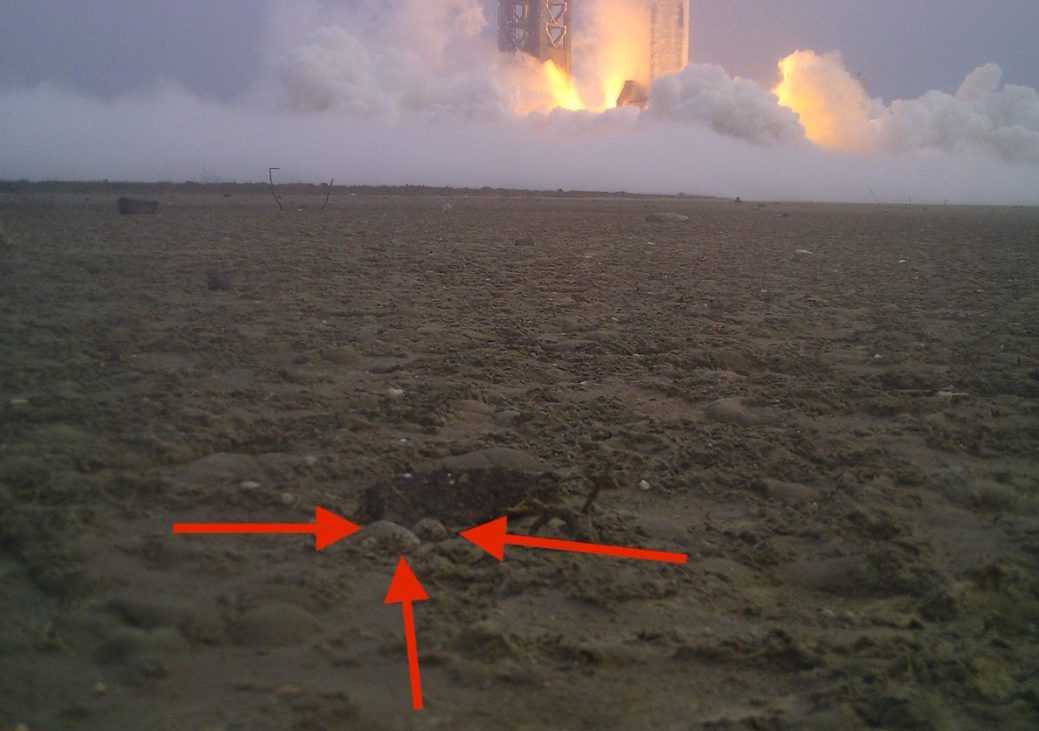
The company’s first orbital test flight from Boca Chica, on April 20, 2023, destroyed the launch pad and sent pieces of concrete flying for hundreds of feet in all directions.
“While large pieces of concrete debris have since been removed, smaller rubble remains widespread,” the report noted.
In order to document the immediate impact of a single launch, the CBBEP team conducted monitoring in the hours immediately preceding and following the June 6 launch. The report summarizes those findings. The nests being monitored belonged to species including least tern, snowy plover and Wilson’s plover.
The team visited the South Launch site on June 5 and recorded GPS locations and nest status for five snowy plover nests, one Wilson’s plover nest, and a “dispersed colony of 11 least tern nests.” All the nests were between approximately 0.16 and 0.26 miles from the edge of the launch pad. Also, two Bushnell game cameras were set up near nests to document disturbances to the site during the launch.
After the launch, on June 6, the team went back to check the six plover nests as well as three randomly selected tern nests, recording the number of eggs in each of the nine monitored nests and checking them for damage. What they found, according to the report, was that all nine nests were either missing eggs, had damaged eggs, or both. All three of the terns nests, which at “full clutch” on June 5 would have had two eggs each, were found to have at least one damaged egg.
“Out of 22 eggs within the nine nests that were checked … only five total eggs within four individual nests were found intact and still viable following the launch,” CBBEP said. “All other eggs were missing or were deemed too damaged to be viable. Cracks/holes in eggs ranged from relatively small cracks (or) notches up to fully penetrated pea-sized holes. Bloody egg contents were found on several egg exteriors near holes within them.”
Out of the nine nests the team observed directly, five had damaged eggs “consistent with being hit with small objects such as the pea-sized concrete/rock debris associated with the launch,” the report read, adding that “this damage is not consistent with any predator interactions in our experience.”
The blast also destroyed the lens on one of the cameras.
Sharon Wilcox, senior Texas representative for the national group Defenders of Wildlife, said the CBBEP report confirms conservationists’ fears regarding the impact on wildlife from SpaceX’s testing activities at Boca Chica.
“This report is the best documentation that exists of the impacts that experimental rockets have on wildlife in Boca Chica,” she said. “The impacts noted in this report are alarming: threat of wildfire, a growing debris field of projectiles and damage to shorebird nests.
“With the increase of launch activity, the degradation to unique habitats and wildlife will also increase. These findings again demonstrate that the environmental assessment that SpaceX operates under is inadequate and requires a full environmental impact statement.”

